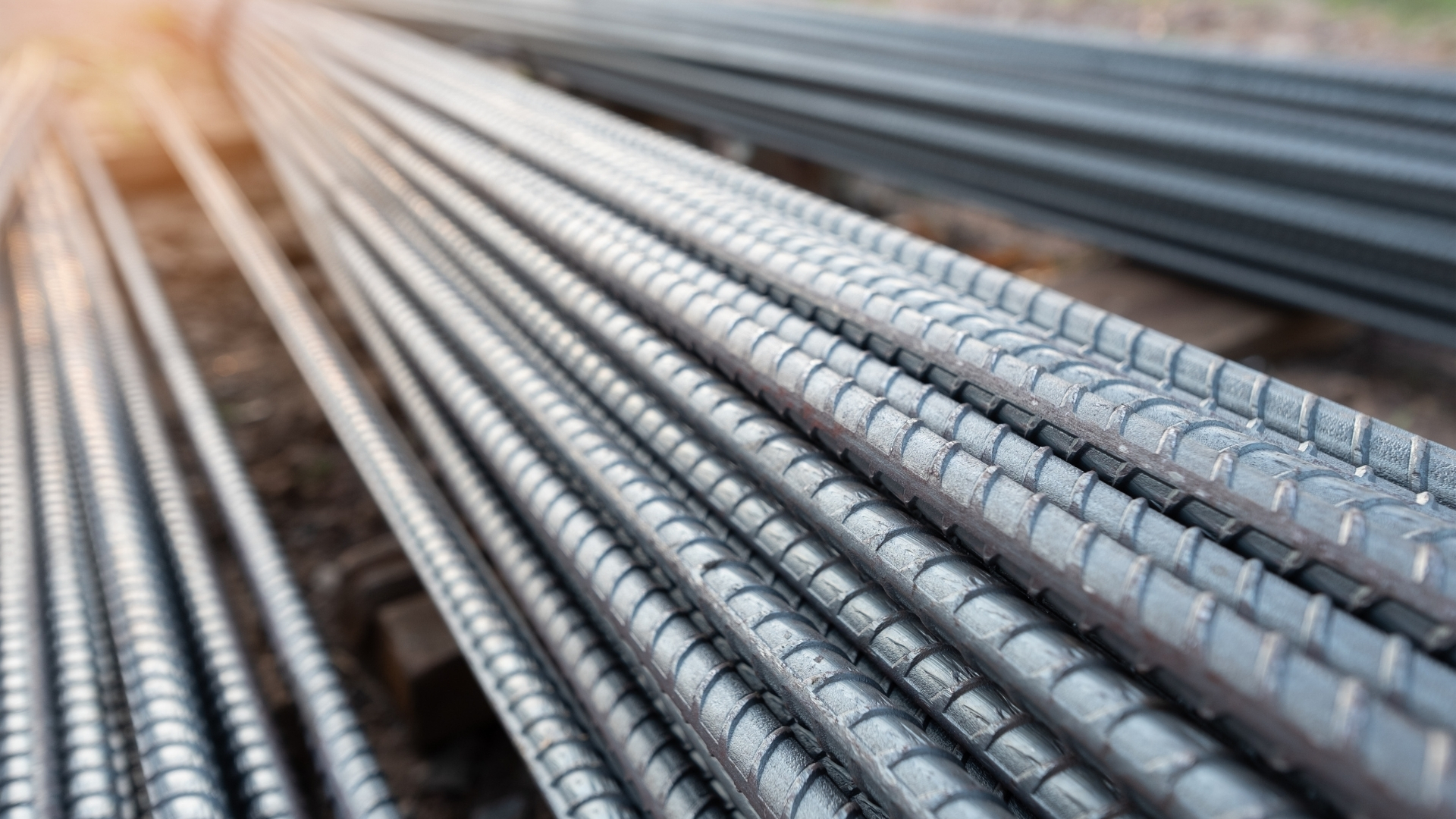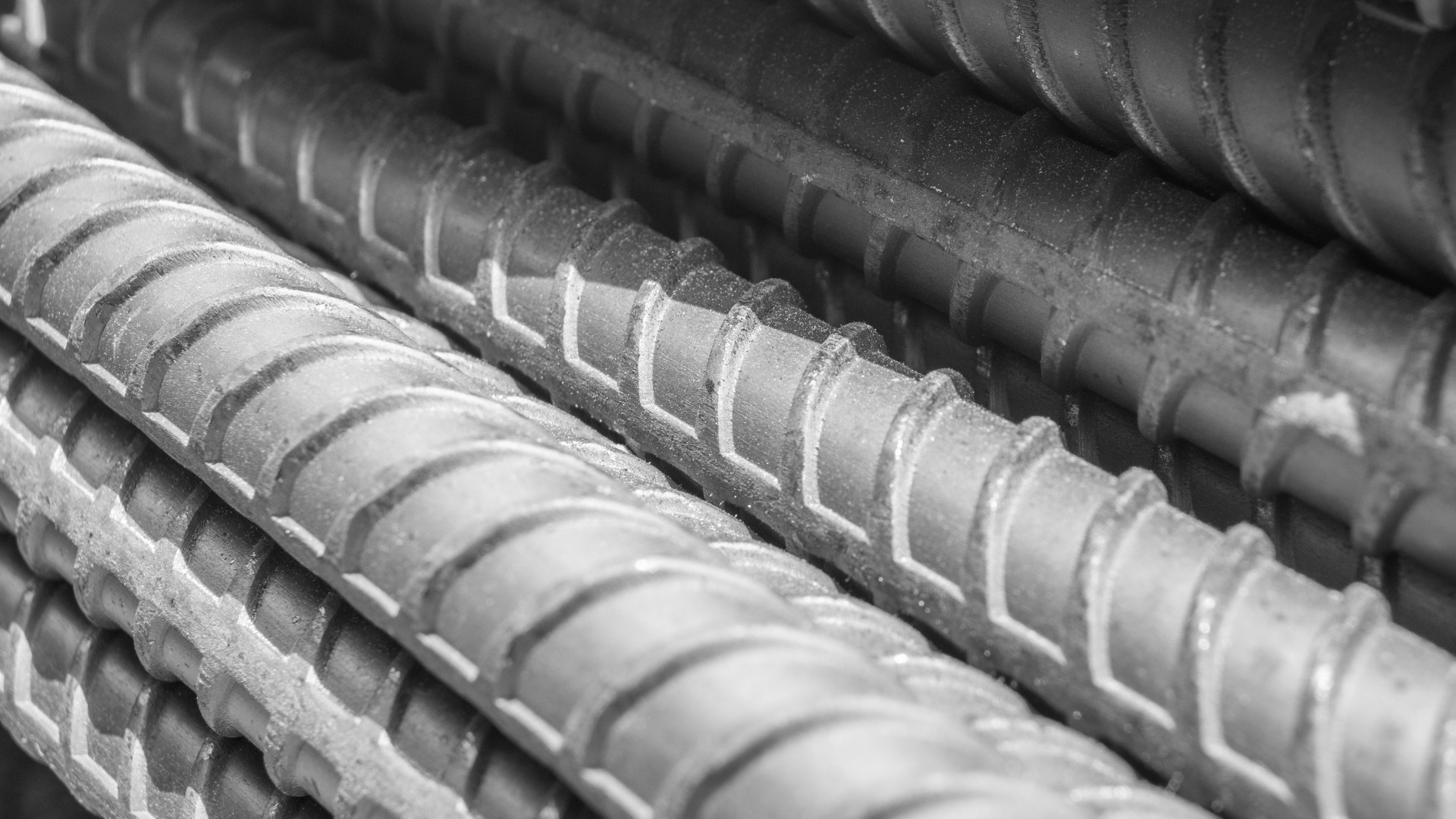Understanding Ribs in TMT Bars for Better Concrete Reinforcement

On construction sites across South India, issues like steel slippage, cracks in beams, and weak concrete bonds are far too common. High humidity, coastal air, and variable soil conditions only worsen these structural challenges. The real cause often lies in how well the steel grips the concrete.
That’s where rib patterns on Thermo-Mechanically Treated (TMT) bars make all the difference. These ribs are not decorative; they are critical for mechanical bonding that locks steel and concrete together under stress. The right rib design prevents pull-outs, improves load transfer, and keeps reinforced structures from failing over time.
In this blog, we’ll explore why ribbed TMT bars are essential for durable concrete reinforcement, the types of rib patterns available, and how to choose the best one for your project. The goal is stronger, safer, and longer-lasting structures that hold up to South India’s toughest conditions.
TL;DR
-
TMT bars are reinforced with ribs to enhance the bond between steel and concrete, improving overall strength.
-
The ribs create friction, preventing slippage and improving load distribution across the structure.
-
Rib patterns vary (single, double, cross-ribbed) to meet specific project needs based on load and stress requirements.
-
Ribs reduce cracking and improve the durability of reinforced concrete, especially under seismic or extreme conditions.
-
Choosing the right ribbed TMT bar ensures better structural stability and longevity for concrete projects.
Science Behind Rib-Concrete Bonding
The strength and durability of reinforced concrete depend on how effectively the steel grips the surrounding concrete. When you put steel in concrete, ribs on TMT bars create a mechanical interlock that prevents slippage and helps both materials act as one structural unit. Along with this interlock, friction from the concrete’s curing process and microscopic adhesion between the cement paste and steel surface further strengthen the bond.
Rib geometry, including height, angle, and spacing, influences how efficiently loads are transferred between steel and concrete. A well-designed rib pattern ensures better grip, reduces micro-cracks, and enhances the overall bond strength.
With this understanding of how ribs improve bonding, let’s explore their specific roles in reinforcing concrete structures.
Role of Ribs in Concrete Reinforcement
Ribs in TMT bars play a crucial role in reinforcing concrete structures. Without these ribs, the bond between steel and concrete would be weak, leading to structural failures. These ribs ensure that the steel reinforcement stays in place and works effectively under load.

The design and pattern of the ribs directly impact the overall performance of the concrete structure. Here are the key roles ribs play in concrete reinforcement:
-
Improved Bonding with Concrete: The ribs secure the steel within the concrete, preventing slippage even under high tension. This is essential for maintaining the integrity of structures like bridges and high-rise buildings.
-
Enhanced Load Distribution: Ribs help spread loads uniformly across the structure, reducing stress concentration at any single point. This improves safety and extends the life of large-scale constructions such as flyovers and industrial complexes.
-
Reduced Cracking: By enhancing the bond between steel and concrete, ribs minimise the likelihood of cracks forming in the structure. This is especially important in coastal regions like Chennai and Kochi, where humidity and saltwater exposure can accelerate corrosion.
-
Increased Durability: The ribs ensure that the steel stays securely in place, even under extreme weather conditions or during seismic events. In areas like Coimbatore and parts of Andhra Pradesh, where seismic activity is moderate, ribbed TMT bars provide added resilience against seismic forces.
-
Prevent Slippage:Ribs ensure the steel stays in place during extreme weather conditions or seismic events. This feature is vital in high-rise constructions in cities like Bengaluru and Hyderabad, where vertical loads are significant.
With a clear grasp of how ribs enhance concrete bonding, it's time to consider the factors that guide your choice of ribbed TMT bars.
Choosing the Right Ribbed TMT Bar for Your Project
Choosing the right ribbed TMT bar is key to ensuring your concrete structure’s strength and longevity. The type of bar you select affects how well the steel bonds with the concrete and supports the load. With many options available, it’s crucial to match the right bar to your project’s specific needs.
Here’s how to choose the right ribbed TMT bar for your project:
-
Grade of Steel: Choose a grade that matches the load requirements of your structure. Higher grades, such as Fe500D or Fe550D, are best suited for larger projects with higher stress demands.
-
Environmental Conditions: If your project is located in a coastal or highly corrosive area, consider using TMT bars with added corrosion resistance to ensure longevity.
-
Type of Structure: For high-rise buildings or bridges, bars with more complex rib patterns, like cross-ribbed or spiral ribbed bars, offer better performance.
-
Concrete Slab Thickness: Thicker slabs may require TMT bars with more pronounced ribbing to ensure better bonding with the concrete.
-
Project Budget: Consider the cost-effectiveness of different TMT bars. Be sure to check the Daily TMT Price on our website for the most up-to-date pricing to help plan your budget accordingly.
-
Reliable Sources: When sourcing TMT bars, it’s important to rely on trusted suppliers who provide consistent quality and timely delivery. Many projects prefer platforms like SteelOnCall, which offer top brands such as Vizag Steel.
-
Compliant with ISI Standards: Ribs in TMT bars must meet ISI standards to ensure consistent quality, bond strength, durability, and structural integrity for reliable performance.
Once you’re familiar with what you need in terms of TMT bars, it’s time to consider where to source them. The right supplier ensures you get quality products, timely deliveries, and a smooth buying experience for your project.
Why SteelOnCall is the Right Choice for Your Steel Needs
When you're sourcing steel for your construction projects, you need materials that you can trust to be both reliable and of high quality. SteelOnCall provides a convenient platform that ensures timely delivery and fair pricing, making it easier to manage your project’s steel supply.
Here are some reasons why SteelOnCall is an excellent choice for sourcing steel:
-
Comprehensive Product Range: SteelOnCall offers a diverse range of steel products, including TMT bars, MS plates, and MS rounds, from trusted brands like Vizag Steel, JSW, and Tata Tiscon, ensuring that all your material needs are met.
-
Transparent Pricing: With real-time pricing updates, you can avoid unexpected cost fluctuations and better manage your project budget.
-
Bulk Purchase Discounts: For large-scale projects, SteelOnCall offers discounts on bulk purchases, helping you save on material costs.
-
Timely Delivery: SteelOnCall guarantees that your steel materials will arrive on time, ensuring your project stays on schedule.
-
Certified Quality: All steel products come with industry certifications, giving you peace of mind about their quality and performance.
With SteelOnCall, you not only get top-quality materials but also a hassle-free experience in procurement. This ensures that your construction project runs smoothly from start to finish.
Conclusion
Selecting the right TMT bars with the correct rib pattern is crucial for the strength and durability of any concrete structure. The ribs on TMT bars ensure that your steel reinforcement works effectively with the concrete, preventing slippage and improving load distribution.
For reliable steel supplies, you can count on SteelOnCall. With a wide range of quality steel products, transparent pricing, and timely delivery, SteelOnCall helps you keep your project on track and within budget.
FAQs
1. Which rib pattern is ideal for high-rise construction in Bengaluru?
For high-rise structures in seismic-prone and monsoon-heavy regions like Bengaluru, cross-ribbed or spiral ribbed TMT bars are ideal. Their complex rib design ensures superior bonding, better load distribution, and reduced slippage under high stress.
2. Fe500D vs Fe550D: Which grade performs better under monsoon site conditions?
Fe550D offers higher tensile strength and ductility, making it suitable for heavy-load structures and wet environments. Fe500D works for low to mid-rise buildings but may require extra corrosion protection in monsoon-heavy areas.
3. What rib pattern works best for thick concrete slabs?
For slabs thicker than 150–200 mm, double-ribbed or spiral ribbed bars are preferred. The pronounced ribs enhance bonding with concrete, reducing cracking and improving overall slab stability.4
4. How to prevent slippage in coastal or high-humidity projects?
Use corrosion-resistant TMT bars with suitable rib patterns, maintain proper anchorage length, and apply protective coatings if needed. Correct rib design combined with quality concrete minimizes slippage.
5. Can ribbed TMT bars handle high seismic stress areas?
Yes. Cross-ribbed and spiral-ribbed TMT bars provide better energy absorption and mechanical bonding. Proper spacing and anchorage are essential to maximize earthquake resistance.


